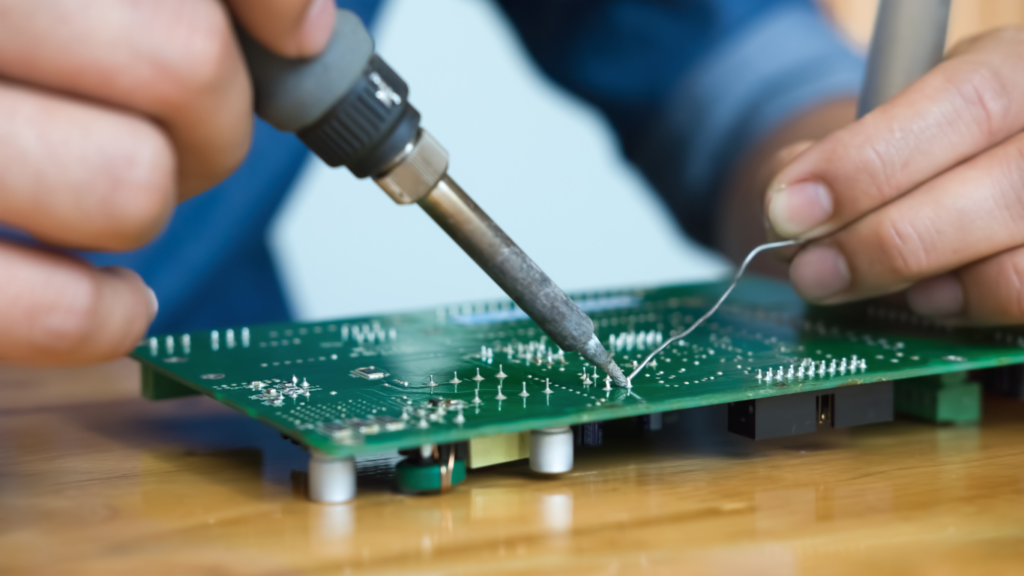
A Flex PCB (Flexible Printed Circuit Board) is a type of printed circuit board that is designed to be flexible, allowing it to be bent, twisted, and folded without damaging the
electrical components or traces. Unlike traditional rigid PCBs, Flex PCBs are made from flexible materials such as polyimide or polyester, which allow them to be used in applications where flexibility and space-saving designs are essential.
Key Features:
- Flexible Materials: Flex PCBs are typically made from flexible substrates such as polyimide or PET (polyethylene terephthalate), which allow the board to bend and flex without cracking or breaking.
- Lightweight and Compact: The flexibility and lightweight nature of flex PCBs make them ideal for compact designs and applications where space is limited.
- Durability: Flex PCBs are designed to withstand bending and twisting, providing greater durability compared to rigid This makes them ideal for use in environments that require movement or where space constraints demand flexibility.
- High Performance: Despite their flexibility, Flex PCBs provide high-performance electrical connections and are capable of carrying high-speed signals, making them suitable for high- frequency
- Multi-Layer and Single-Layer Options: Flex PCBs can be single-sided, double-sided, or multi- layered, allowing for a wide range of design options and complexity.
Applications:
- Consumer Electronics: Flex PCBs are commonly used in consumer electronics such as smartphones, tablets, wearables, and cameras, where space-saving and flexible designs are needed.
- Medical Devices: Flex PCBs are used in medical devices such as hearing aids, pacemakers, and diagnostic equipment, where compactness, flexibility, and reliability are crucial.
- Wearable Technology: Wearable devices like fitness trackers, smartwatches, and health- monitoring equipment often use Flex PCBs to integrate complex circuits into a small and flexible form factor.
- Automotive Electronics: In the automotive industry, Flex PCBs are used for systems such as infotainment, lighting, sensors, and control systems that require flexible, durable circuits to withstand movement and vibrations.
- Aerospace and Military: Flex PCBs are used in aerospace and defense applications where lightweight, high-performance, and flexible circuit boards are required for systems like avionics, radar, and communication equipment.
- Industrial Equipment: Flex PCBs are also used in industrial automation systems, robots, and control systems, where the circuits need to flex or bend to fit into tight spaces.
Advantages:
- Space-Saving: Flex PCBs allow for more compact and lightweight designs, making them ideal for space-constrained applications such as wearable devices and miniaturized electronics.
- Flexibility and Durability: The ability to bend, twist, and fold without compromising functionality makes Flex PCBs ideal for applications in dynamic environments that require
- Enhanced Reliability: With fewer connections and less wiring, Flex PCBs often reduce the potential for mechanical failures, providing greater reliability over rigid PCBs.
- Reduced Assembly Time: Flex PCBs can reduce the need for complex wiring and connectors, allowing for quicker and simpler assembly in certain applications.
- Improved Signal Integrity: Flex PCBs can provide superior signal integrity, especially in high- frequency applications, due to their reduced connection lengths and better design flexibility.
Flex PCBs provide the ideal solution for applications requiring compact, flexible, and reliable circuits that need to withstand movement and environmental stress. They are commonly used in high-performance, space-constrained, and wearable electronics, where traditional rigid PCBs would not be feasible. While they may come with higher manufacturing costs and design complexity, their unique advantages in flexibility, space-saving, and durability make them indispensable in industries ranging from consumer electronics to aerospace and medical devices.
